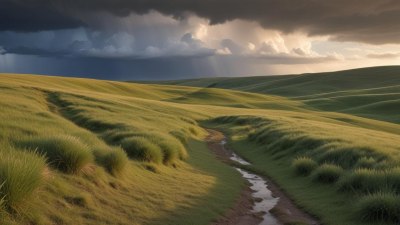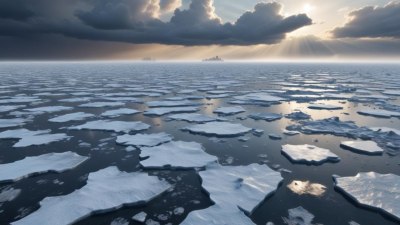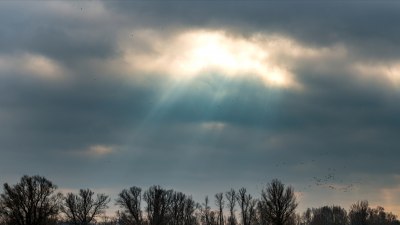How Weather Shapes the Landscape Over Time
Discover the profound effects of weather on the landscape, from erosion to sediment deposition, and its long-term changes.

This image was created with the assistance of Freepik
Weather plays a crucial role in shaping landscapes over time, influencing everything from the formation of mountains to the erosion of coastlines. Understanding how these processes work requires a deep dive into various environmental factors, geological formations, and climatic conditions. This article explores the intersection of weather and landscape evolution through various scientific perspectives, showcasing the multifaceted nature of Earth's dynamic systems.
Firstly, it is important to define what is meant by 'landscape.' In geographical terms, a landscape is comprised of the visible features of an area of land, which includes mountains, valleys, rivers, and forests. Landscapes are not static; they are continually shaped and reshaped by natural forces. Weather, defined as the day-to-day state of the atmosphere, influences these features over time, catalyzing both gradual and sudden changes.
Weathering: The First Step in Landscape Formation
Weathering is the process through which rocks and minerals break down into smaller pieces. It can occur due to chemical, physical, or biological processes. Weathering is fundamentally influenced by weather conditions such as temperature, moisture, and wind. For instance, freeze-thaw weathering occurs in climates where temperatures fluctuate around the freezing point, causing water to infiltrate rock cracks. When the temperature drops, the water freezes and expands, eventually cracking the rock apart. Over time, this can significantly alter the landscape, contributing to the formation of valleys, hills, and even mountainous ranges.
Chemical weathering, on the other hand, happens when minerals in rocks react with environmental elements like water, oxygen, and acids. This type of weathering is more prevalent in warm, humid climates. For example, limestone, primarily composed of calcium carbonate, can dissolve when it interacts with acidic rainwater, leading to the development of karst landscapes characterized by sinkholes and underground rivers.
Wind and Erosion: Sculpting Earth’s Surface
Erosion is another essential process where weather and landscape intersect. Wind, water, ice, and gravity all contribute to erosion, each playing a vital role in shaping various terrains. In arid regions, wind erosion is significant; it can transport sand and fine particles, eroding rock formations and creating unique landscapes like sand dunes and rock arches. The movement of these particles can take thousands of years, resulting in landscapes that tell a rich geological history.
Water erosion is perhaps the most visible and impactful form. Rivers carve through landscapes, creating valleys and gorges, while heavy rainfall can lead to flash floods that rapidly erode soil and rock. Coastal erosion is accelerated by storm surges and high winds, reshaping coastlines dramatically. Waves continually pummel shorelines, wearing away cliffs and transporting sediment along the coast, which can lead to the creation of new landforms such as beaches and estuaries over time.
Glacial Landscapes: A Slow Freeze
Glaciers, massive sheets of ice that flow slowly downhill, are significant landscape shapers, particularly in polar and high-altitude regions. As glaciers move, they scrape the underlying rock, causing profound changes in the landscape. The process of glacial erosion is slow but relentless, creating U-shaped valleys, fjords, and various other topographical features.
Moreover, glacial melt, influenced by temperature changes due to global warming, reshapes landscapes at an accelerated rate. As ice retreats, it exposes previously covered land, leading to the formation of new ecosystems. Additionally, the meltwater contributes to increased river flows, further altering the existing topography through erosion and sediment transport.
Climate Change: The Accelerating Force
Climate change represents a profound influence on both weather and landscape. Rising global temperatures affect weather patterns, leading to increased rainfall in some areas and severe droughts in others. Such shifts can accelerate erosion and deposition processes, fundamentally altering landscapes in ways that may be irreversible.
For example, increasing rainfall leads to greater runoff, enhancing the erosion of hillsides and valleys. Conversely, drought can lead to soil degradation, reducing the land's ability to retain water and nurture vegetation, further impacting landscape aesthetics and functionality. This interaction creates a feedback loop, where changes in the landscape also affect local weather patterns, showcasing the interconnectedness of Earth's systems.
Human Impacts: Modifying Natural Landscapes
While weather and climate have historically been the primary factors shaping landscapes, human activities also play a crucial role today. Deforestation, urbanization, and agriculture can drastically alter the natural environment. For instance, the removal of vegetation increases soil erosion due to the loss of roots that stabilize the soil. Urban areas, with their vast expanses of concrete and asphalt, change natural water drainage patterns, leading to increased flash floods in previously stable areas.
Moreover, human-induced climate change is modifying weather patterns, which in turn affects natural landscape processes. The melting of polar ice caps due to global warming influences both sea levels and the habitats of many species. As a result, coastlines are reshaped, and ecosystems are disrupted, leading to cascading effects on biodiversity.
Adaptive Landscapes: Resilience Through Time
Landscapes are not passive; they demonstrate resilience and adaptability in response to changing weather patterns. Natural systems often adapt to new conditions by evolving over time. For example, while a landscape may experience increased erosion due to heavy rains, it may also regenerate and develop new vegetation patterns that stabilize the soil more effectively.
Moreover, understanding how landscapes respond to weather can inform conservation and restoration efforts. By studying these processes, scientists can develop strategies to protect vulnerable landscapes and promote biodiversity. Restoration techniques aim to rebuild degraded landscapes, taking into account the weather patterns that will impact those efforts for years to come.
The Future of Landscapes: Predicting Change
As we look forward, the impacts of weather on landscapes will likely become more pronounced due to ongoing climate change. Understanding these changes and predicting future landscape evolution will be crucial for planning and adaptive management. Researchers employ modeling techniques to forecast how weather changes could affect erosion rates, vegetation patterns, and even the geological stability of specific areas.
The combination of technology, such as remote sensing and geographic information systems (GIS), enables more accurate landscape assessments and predictions. These tools can help track changes in real-time, offering insights into how weather patterns influence landscapes over short and long time scales.
In summary, weather profoundly shapes landscapes through a multitude of processes, including weathering, erosion, and the impact of climate change. Each element interacts with the others, creating a tapestry of evolution over time. As both natural and anthropogenic factors continue to influence the planet, understanding this interplay becomes increasingly important for preserving the world's diverse landscapes. The future will bring new challenges, but also opportunities, as we learn to manage our interactions with the environment more responsibly, ensuring the resilience of landscapes for generations to come.











